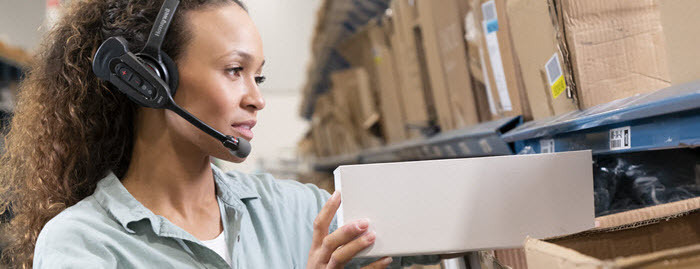Dangerous goods: registration, restrictions and DG list in one WMS
06 Jan 2022
3 min read
You can place most of your goods anywhere without any restrictions in your warehouse. This does not apply to dangerous, or ADR goods. For these goods, strict rules apply, which you need to take into consideration in your daily processes. Including keeping the controlling authorities up to date about the articles you store in your warehouse. And the restrictions about where you are allowed to store them. So are you already storing dangerous goods in your warehouse or are you likely to do so? Then we will explain how you can manage the registration and transportation of dangerous articles in 3PL Dynamics. Firstly, in this blog, we will only elaborate on the registration in your warehouse.
A quick reminder: What are ADR Goods?
Dangerous goods are also known as ADR goods because ADR is the pan-European treaty regarding the transport of these goods. ADR stands for “Accord européen relatif au transport international de merchandises Dangereuses par Route” and contains classification criteria, rules and guidelines with regard to specific goods. As a result, these types of items are labeled dangerous and are also referred to as ADR goods.
Register dangerous goods per customer item
Firstly, you can register all data of your dangerous goods per customer item. In addition to the standard data such as the UN number, hazards classes, and tunnel code, you also register the technical description here. You can automatically include the translations in different European languages.
Set up restrictions on customer item level
Based on the registration per customer item you can now also set up restrictions. For example, you can indicate that there are no dangerous goods at certain locations. When a colleague tries to move that article to an “unauthorized location”, he will not succeed. In that case, an error message will appear in the booking and the employee will have to look for another location.
Also, it is possible to exclude certain (combinations of) hazard classes for a specific location. By doing this, you can store the dangerous goods according to the agreement in a very specific and targeted way. Besides, in this way you can keep the fire brigade or your local environment service satisfied.
Automatically send the list of dangerous goods to the authorities
The inspecting authorities expect that you regularly inform them about the dangers in your warehouse. Should a fire start at your distribution center, then they know exactly what to do. This is a level of safety you want to guarantee. You can automatically deliver the digital list with dangerous goods to them, yourself, and your environment. This way they do not even have to ask for it. You send the list in a digital form. No employee has to put in extra work. Concluding, this results in satisfied authorities, while it costs you nothing more than usual.
Van Appeldoorn Chemical Logistics specializes in storage, (re)packing, goods in and out of dangerous goods. The company has several warehouses for storage and cross-docking of dangerous goods, but also non-hazardous goods. They support these processes with 3PL Dynamics. What was their reason a few years ago? Read it in Boltrics' news item.
Handle dangerous goods consciously
Whether you are already storing or transporting hazardous goods for your customers or if you are planning to do so at a later stage, this must be done correctly. Because an incident with chemical substances can have negative consequences far into the future. Do you want to know more about how to handle ADR goods? We are happy to help you with this. In that case, just contact us.







